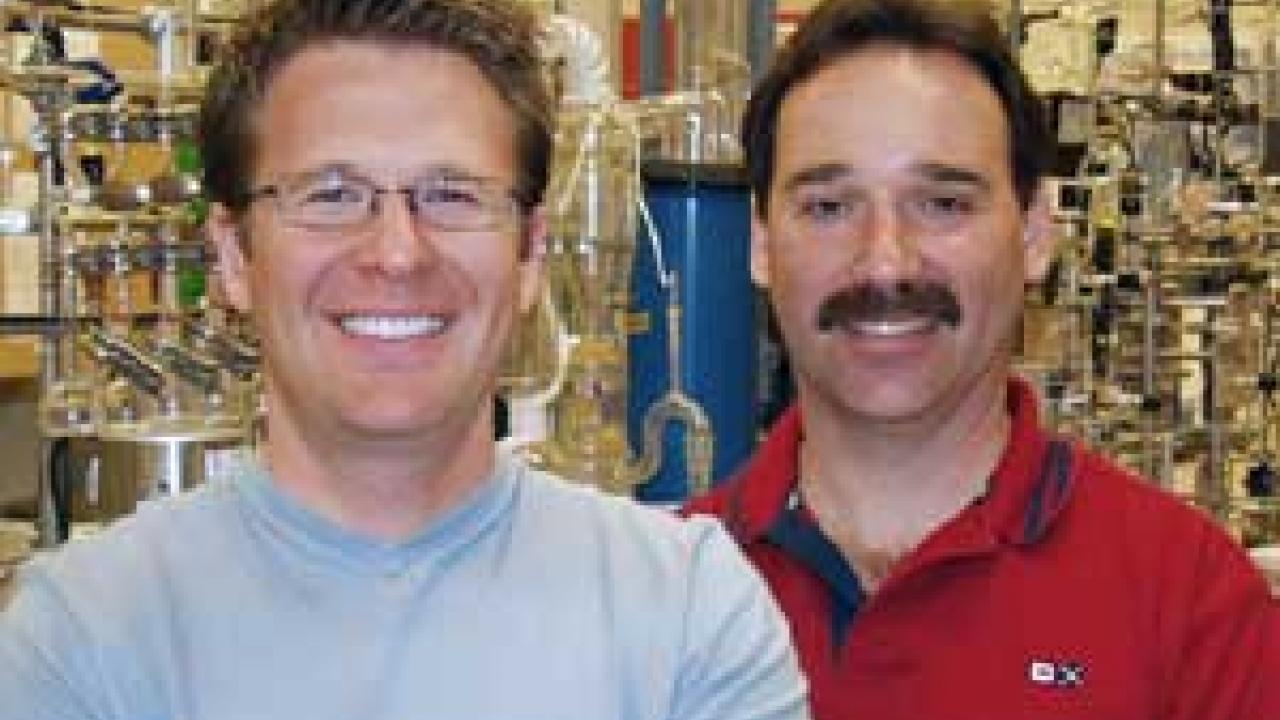A new study from the University of California shows, for the first time, that the deep-ocean circulation system of the north Atlantic, which controls ice-age cycles of cold and warm periods in the Northern Hemisphere, is integrally coupled to salinity levels in the Caribbean Sea.
This research reinforces concerns that global warming, by melting the glacial ice of Greenland, could quickly and profoundly change salinity and temperatures in the north Atlantic Ocean. One consequence might be much colder weather in northern Europe and Britain and perhaps even in eastern Canada and the U.S. northeast.
The study is published by the journal Nature in its online edition today (March 10) and its print edition tomorrow. The authors are graduate student Matthew Schmidt and geology professor Howard Spero of UC Davis, and geology professor David Lea of UC Santa Barbara.
During Earth's warm periods, like the present one, surface ocean currents transport heat from the tropics to the cool northern latitudes. The new data, a record of Caribbean salinity for the past 120,000 years, show that when the northern hemisphere warmed, Caribbean salinity levels dropped.
The authors hypothesize that elevated Caribbean salinity, which is transported via the Gulf Stream to the north Atlantic, amplifies the heat transport system by increasing the deep-ocean circulation rate. When the North Atlantic cools, Caribbean salinity builds up because the deep ocean circulation drops to a fraction of its previous rate and the Gulf Stream no longer transports salty water away.
If Caribbean salinity helps power the heat-transport system, then what might happen if melting ice from Greenland dilutes the salinity of the north Atlantic at a time when Caribbean salinity is low, like today?
"Our atmospheric and oceanic systems are integrally linked," Spero said. "Unnatural climate perturbations, such as global warming, can impact ocean circulation and nudge the system towards a threshold that could produce an abrupt climatic change."
Spero and Lea have a long collaboration in using chemical analyses of the fossil shells of tiny sea animals, called foraminifera, to reconstruct Earth's climate.
The new study was headed up by Matthew Schmidt, Spero's Ph.D. student. The researchers analyzed fossil foraminifera to reconstruct the rise and fall of the temperature and salinity of the Caribbean Sea throughout the last full ice-age cycle, when huge glaciers reached far south into North America and Europe.
They then compared those salinity cycles with published reconstructions of ice-age oscillations of deep Atlantic Ocean circulation patterns. The correlations were striking.
"I don't believe the Earth can plummet into an ice age today," Spero said. "But human-caused global warming has the ability to affect climate in ways we haven't seen before and do it very quickly."
A paper that refers to similar events occurring today was recently published in the journal Nature by an international group of scientists led by Ruth Curry of Woods Hole Oceanographic Institute in Massachusetts.
Curry's study showed that in the past 50 years, salinity in the tropical Atlantic Ocean has risen and salinity in the north Atlantic has fallen. That is the pattern that Schmidt, Spero and Lea say has led to colder climates in the past. "We present a historical analog to the salinity buildup that is observed in the tropics today by Dr. Curry and others," said Spero and Lea.
The University of California study was funded by the USSSP Schlanger Ocean Drilling Graduate Fellowship and grants from the U.S. National Science Foundation.
Media Resources
Matthew Schmidt, UC Davis Geology, (404) 894-1579, mschmidt@eas.gatech.edu
Howard Spero, UC Davis Geology, (530) 752-3307, spero@geology.ucdavis.edu
David Lea, UC Santa Barbara Geological Sciences, (805) 893-8665, lea@geol.ucsb.edu
